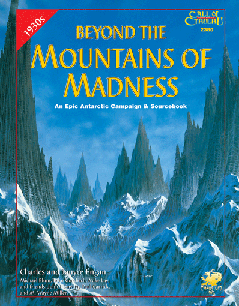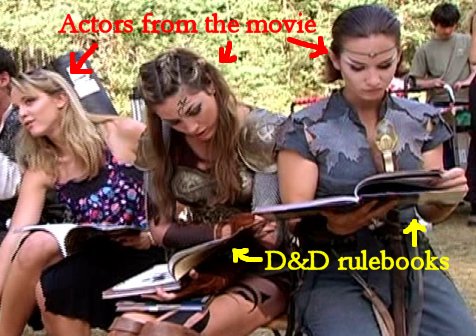“Excuse me–could you help me, please?” I gasped. I clung desperately with quivering arms to the stack of books I was relocating from my car to the post office. I had managed to wedge my foot behind the glass front door, but dared not reassign a limb from the task of holding the books upright to the challenge of pulling the door open. The business-suited man on the other side of the glass must have heard the desperate edge in my voice; eyeing the monstrous stack of books warily, he pushed the door open for me.
I pushed through the door into the crowded post office interior; the stack of books caught the edge of the door as I entered and threatened to topple. A surprisingly agile torso twist kept a shelfworn copy of Promised Sands from sliding off the top of the stack and dragging Mage: the Ascension (the Revised version, of course) with it. A curious combination of fatigue and adrenaline rushed through my pasty-white and spindly arms; this was the probably the most strenuous activity to which they had been put all year.
I shambled towards the post office desk. Almost there… there. I let the stack of books fall onto the counter with a loud bang. The post office worker peered at me from around the stack as if she had never before seen such a sight.
“I need to mail these,” I managed, proudly indicating the stack of books.
The post office lady nodded. I watched as she divided the giant stack into four smaller piles, put them individually on the scale, and tallied up the weight.
“How much?” I asked. “How much do they weigh?”
“Let’s see… that would be eighty-five pounds.”
Eighty-five pounds! Somehow, I was getting rid of 85 pounds of game books. And they represented just one portion of my sprawling collection of books. How on Earth had I come to possess such a mass of game material? And why was I trimming it down now?
And these were just the ones I had set aside in the “I’m probably never going to play this” pile.
It felt strange–strange that I’d managed to accumulate so many books, strange that so many of them were passing to and then from my possession without ever having been played. Strange that my packrat, collector’s personality was actually excited at the prospect of a slimmed-down, trimmer game collection.
I loved some of those game books. I’d read through them all, adding the ideas within to the pool of roleplaying ideas in the back of my mind. I’d been proud of those games–perversely proud to have them taking up an entire shelf or two in the hallway. Proud that I’d tracked them down on the internet, in used bookstores, in foul-smelling, sanity-shattering comic-book stores.
But over time, that love had soured, and turned to something like hate. By the time I finally decided to expunge them from my collection, they’d become little more than a standing reminder that I wasn’t playing nearly as much as I used to play, nearly as much as I’d always hoped and assumed I’d be playing at this point in my life. The near-pristine books spines stared down at me from the bookshelf, accusing: How can you keep us all here when you’re not even going to play us?
It was time. I knew it. My collection was too big, and there was something just wrong about hording a giant stack of game books and never using them in an actual game. Somewhere out there, somebody was scouring Ebay and his local bookstore for copies of game books that I have and am not even using. They had to go. I had to set them free.
And so I found myself sweating beside my stack of game books, waiting quietly while the post office lady filled out the shipping form. (When she reached the “Contains dangerous materials?” question, she checked the “Yes” option. I decided not to ask.) Beside me sat dozens of books–eighty-five pounds of books, to be exact–filled with ideas that I hoped would find their way to somebody who’d really appreciate them. Books about wizards, elves, vampires, aliens, adventurers, and the myriad worlds they all inhabited. Books into which countless game writers had invested countless hours of their lives.
“Sign here, please.” I scribbled my name on the corner of the shipping form indicated by the post office lady’s pointing finger. I paid the shipping fee, started to leave, but hesitated for a moment.
“You’ll pack them up carefully? I’d like them to get there in good shape.”
“Yep, we’ll pack ’em up good.” The somewhat bored look in the post office lady’s eyes left me unconvinced, but I’d gone too far down this road to turn back now.
“If you need to split them into several smaller packages to keep them safe, go ahead,” I suggested. “That might keep them from sliding around and getting their corners banged up.”
“Hmmmm,” said the post office lady, and I knew my time was up. Besides, I had to get back to work–this little expedition had consumed most of my lunch hour.
“Thanks,” I said, feeling something like sadness, fighting a last-minute urge to leap over the counter, grab the books, and race them back to their spots on the hallway bookshelf. As I pushed my way out the glass door, I glanced back again and saw a small squad of post office workers descending on the strangely forlorn stack of books, bubble-wrap and cardboard freight boxes in hand. I stepped outside.
That was a few weeks ago. There’s still a gap in the bookshelf, an empty stretch of real estate where once Spycraft and Legend of the Five Rings stood proud. Proud, but unused. I thought I might regret my decision to trim down my collection, but I don’t. It feels good to ship my unloved children off to someplace where I think they’ll find a better life at somebody’s game table.
I don’t miss them, not all that much.




 by
by 



